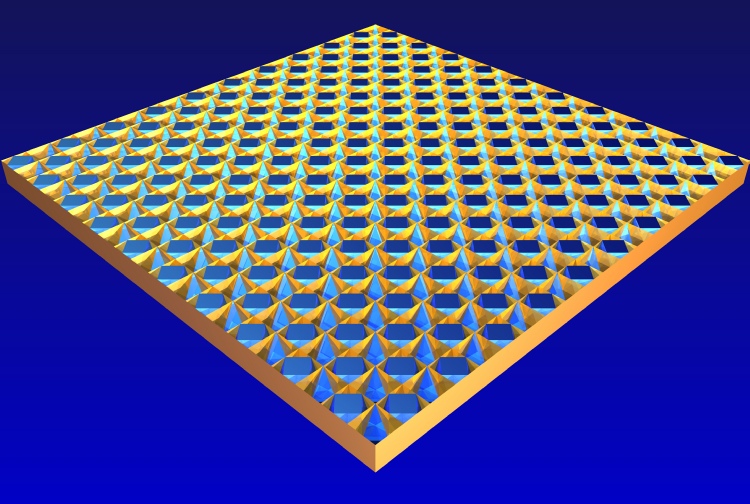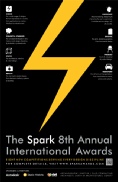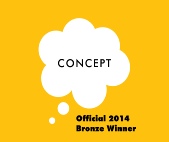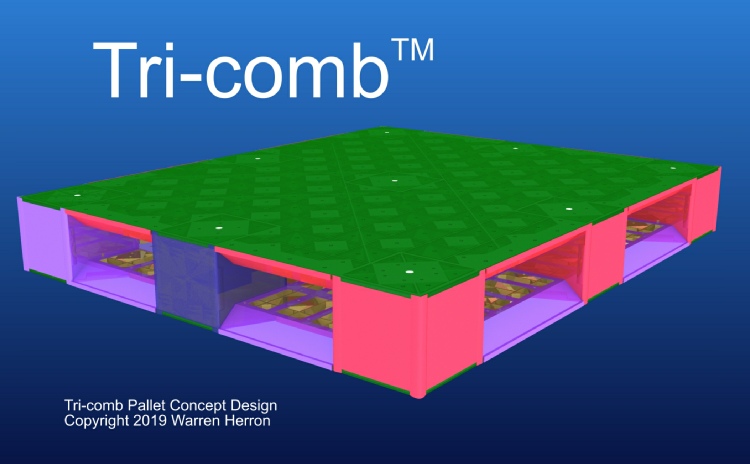
Copyright 2020 Warren L. Herron
The Future is Lighter!
TM

TM
Ultra Strong/Lightweight Panels
Tri-combTM is a suite of patented Ultra High-Strength, Lightweight Cellular Panel Structures we are currently licensing for high-strength and lightweighting construction, engineering and design applications.
We believe they are the strongest, lightest, moldable structures ever created.
The designs have received U. S. and foreign patents and 3 prestigious international design awards.
U. S. Patents:
7,021,017
7,591,114
8,609,226
10,519,658
(To see the award pages click the logos above)
In addition to the iF Design Award and the Spark Award, the designs received a “Top 100 Entries” award from the 2014 NASA Tech Briefs, Create The Future Design Competition.
Ultra Strong and Lightweight:
Recent (2017) physical testing of machined aluminum 6061 un-laminated prototypes by Stress Engineering Services, Inc. proved the designs to be extraordinarily strong. In a flat compression test the one half pound (.227 Kg), 4 cell, 1” x 4” x 4” prototypes broke at an average of 177,000 pounds (80,455 Kg) of force with an average peak resistance of 251,000 pounds (114,090 Kg). Failure was only initiated at over 350,000 times the weight of the prototypes. To our knowledge, there is no other engineered material that can perform this well.
Test Results Reports - See the “About Tri-combTM” page.
How is this even possible?
Tri-combTM panels use a unique self-balancing and self-reinforcing cellular matrix design. The cells alternate 180° in orientation throughout the panels, allowing them to withstand extremely high stress applications by distributing applied forces efficiently and strategically. All vertical walls are reinforced with triangle bracing and at least one buttress. Every outside cell wall is supported by one buttress and 2 triangle braces. All interior walls are supported by 2 buttresses (one on top and one bottom) and 4 triangle braces. All internal square cells are reinforced by a total of 5 buttresses and 16 triangle braces, virtually eliminating weak points. This comprehensive and balanced 3D reinforcement allows Tri-combTM to utilize the strength of any material to full advantage. As most of the panel is empty space due to the planar cell matrix architecture and does not always require lamination to achieve its strength and rigidity, it can be extremely lightweight - lighter even than honeycomb panels for the same or even more strength. (Lamination will actually increase the strength of the panels, but usually lowers the overall material efficiency somewhat.)
Research and Development
Over the past 15 years, we have conducted substantial research (over 1000+ comparative tests) using Strand7® Professional Finite Element Analysis software.* The FEA work has repeatedly proven the panels to be superior in Crush, Bend and Shear behavior, when compared to similarly constrained and sized laminated honeycomb models. Through this research, we have discovered multiple ways to further strategically optimize the panels and improve their performance and efficiency for a diverse range of specific practical applications.
Simple, Cost Effective Production
Molding - It only requires one step to mold or cast a finished Tri-combTM panel - flat or curved - in a simple 2-part mold. The structures work well in any scale - from very large to small. Through strategic reinforcement, there is no need for a structural laminate to achieve previously unattainable aerospace level performance and material efficiency. Panels can be molded as fast as the molding or casting machine can cycle. The designs are ideal for die-casting, casting, compression molding or injection molding. If you want to make millions of parts, this is your best bet.
3D printing - Eliminates the curvature limits of molding, freeing up the designs to make previously impossible parts. 3D printing can benefit from the material efficiency in multiple ways. Using less material to get the same or even better results allows for less material cost and even FASTER printing times. The savings is compounded with every part produced. The more you print, the more you will save in time and materials. That freed up time and material can be put to good use and profit printing something else! And your customers will be able to realize a part that is potentially even lighter than otherwise possible (or expected).
Other methods - The structures can also be machined or constructed by welding from components.
Tri-combTM is ideal for thin walled, ultra high performance parts.
Materials
Any moldable material can be made into flat or curved* panels using these designs, whether it be aluminum, steel, concrete, ceramics, glass, plastics or composites, such as carbon fiber. The structures enable the creation of new construction materials and products unmatched in strength to weight ratios. It is possible to lightweight products, save money and materials and even increase strength - simultaneously.
Few technologies can improve weight, strength and design on so many levels.
To learn how easy it is to design with Tri-combTM,
see the “About Tri-combTM” page.
For more information or to set up a meeting to discuss licensing
email: warren_herron@tri-comb.com
or contact us.
*Strand7® Professional FEA software was used in all computer modeling testing.
*There is a practical limit to the amount of curvature a panel can have and still be 2-part molded. If more curvature is needed, 3D printing is the ideal method.




